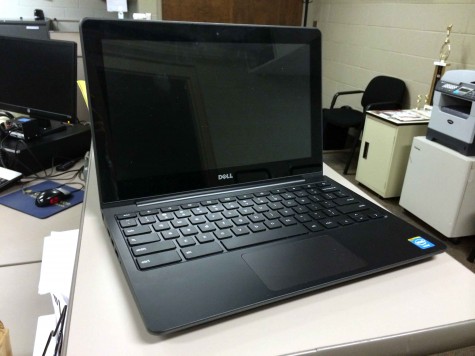Tech bond advancements
September 15, 2014
While students have had the last three months off of school, the teachers have been doing some learning of their own.
A bond was passed in May this year, that calls for 1-to-1 technology to be available to students, and improvements on the infrastructure of all district buildings, including the addition of access points.
“The tech bond allows our technology to be updated over the next 10 years,” Superintendent Keith Konarska said. “It ensures that students have recent and current tools in their hands to help expand and enhance instruction in our classrooms. It also, I believe, better prepares them for the world of work and school they’ll be entering after high school.”
Teachers have volunteered their time to go to courses, or “technology boot camps” where they are trained to use Google docs, Google drive, the new gradebook software, and how to implement it in the classroom when they receive their devices this fall.
Business technology teacher Chad Jettner was one of four instructors who trained staff this summer. His course focused on how to use Schoology and how to set up online classrooms for teachers. Jettner said he is amazed by the new possibilities the technology will bring.
“I think we are super fortunate that our community recognized that this is a need, and it is a gift,” Jettner said.
This is the first year the bond is in effect, so the focus is on unseen upgrades, improving the wireless, increasing the bandwidth, and piloting the new technology for the future. The goal is to educate teachers so they feel comfortable with the technology when students receive their own at the beginning of the 2015-2016 school year.
Kids in young fives through fourth grade will have iPads available to them, while students in fifth grade to twelfth grade will be assigned Dell Chromebooks at orientation, that they will get year after year.
“We really felt once you got to fifth grade we really need to have some kind of device that was geared more towards productivity,” Instructional Technology Coordinator Doug Start said.
The Dell Chromebook is run by Google Chrome, and is more helpful to older students, allowing them to type up documents or create presentations for class.
Although students have to wait until next school year to get their personal Chromebook, they will have the opportunity to use the new school laptops that are replacing the old ones.
Since there were only about 20 access points in the entire building, there will be a big upgrade to the Wi-Fi this year for the number of devices coming to each classroom next school year. Students will have access to Wi-Fi from every classroom, but only on their school devices and not for personal use.
This Christmas break, the laptop labs will be brought to pods one and five and the Wi-Fi will be hammered with a lot of traffic in order to see where work needs to be done and where the holes need to be filled.
This is done to avoid major problems during the school year.
“What we’re doing for this year in training the staff and prepping everybody for the roll out is to make sure that the capacity is there so that a year from this fall, when all the students have their one-on-one devices, the capacity will be available to them,” Konarska said.
Two years before the tech bond was passed, a committee researched other schools, like Holland Christian and Zeeland, who have one-to-one technology. They observed the positive and negative aspects of both systems.
To avoid running out of money for device improvements, a plan was put in place to update devices every four years.
“We waited until we could do a 10 year plan in a very responsible way, and allow for the cyclic upgrades to be done and planned for,” Konarska said.
Start believes there are many new opportunities for students with one-to-one devices.
“When you think about the amount of information that’s out there, having access to it through a computer with a Wi-Fi connection really gives you some independence in your learning,” Start said. “Conversations can become broader.”

